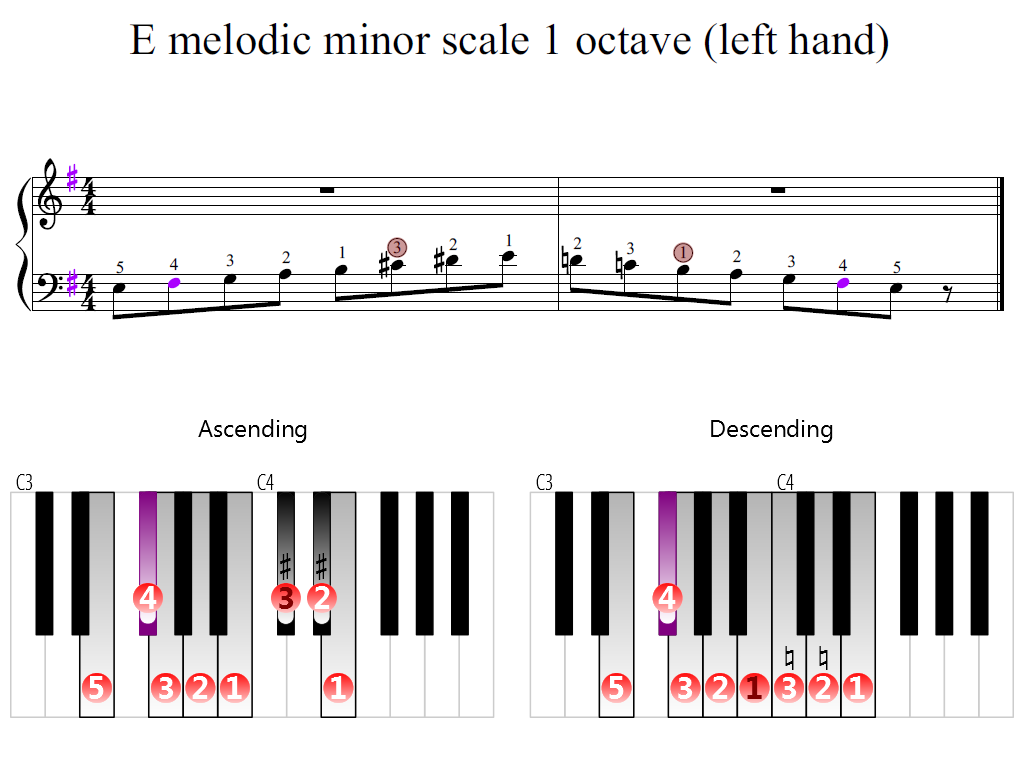

It also shows the scale degree chart for all 8 notes. Melodies in minor keys often use this particular pattern of accidentals, so instrumentalists find it useful to practice melodic minor scales.This step shows the ascending E-flat major scale on the piano, treble clef and bass clef. (Please see Beginning Harmonic Analysis for more about this.) In the melodic minor scale, the sixth and seventh notes of the scale are each raised by one half step when going up the scale, but return to the natural minor when going down the scale. Harmonies in minor keys often use this raised seventh tone in order to make the music feel more strongly centered on the tonic.

The harmonic minor scale raises the seventh note of the scale by one half step, whether you are going up or down the scale. There are two other kinds of minor scales that are commonly used, both of which include notes that are not in the key signature.

They contain only the notes in the minor key signature. To hear some simple examples in both major and minor keys, see Major Keys and Scales.ĭo key signatures make music more complicated than it needs to be? Is there an easier way? Join the discussion at Opening Measures.Īll of the scales above are natural minor scales. Music that is in a minor key is sometimes described as sounding more solemn, sad, mysterious, or ominous than music that is in a major key. So you can't, for example, transpose a piece from C major to D minor (or even to C minor) without changing it a great deal. Music in minor keys has a different sound and emotional feel, and develops differently harmonically. But music that is in D minor will have a different quality, because the notes in the minor scale follow a different pattern and so have different relationships with each other. (See Beginning Harmonic Analysis for more on this.) So music that is in, for example, C major, will not sound significantly different from music that is in, say, D major. In each major scale, however, the notes are arranged in the same major scale pattern and build the same types of chords that have the same relationships with each other. Each major key uses a different set of notes (its major scale).


 0 kommentar(er)
0 kommentar(er)
